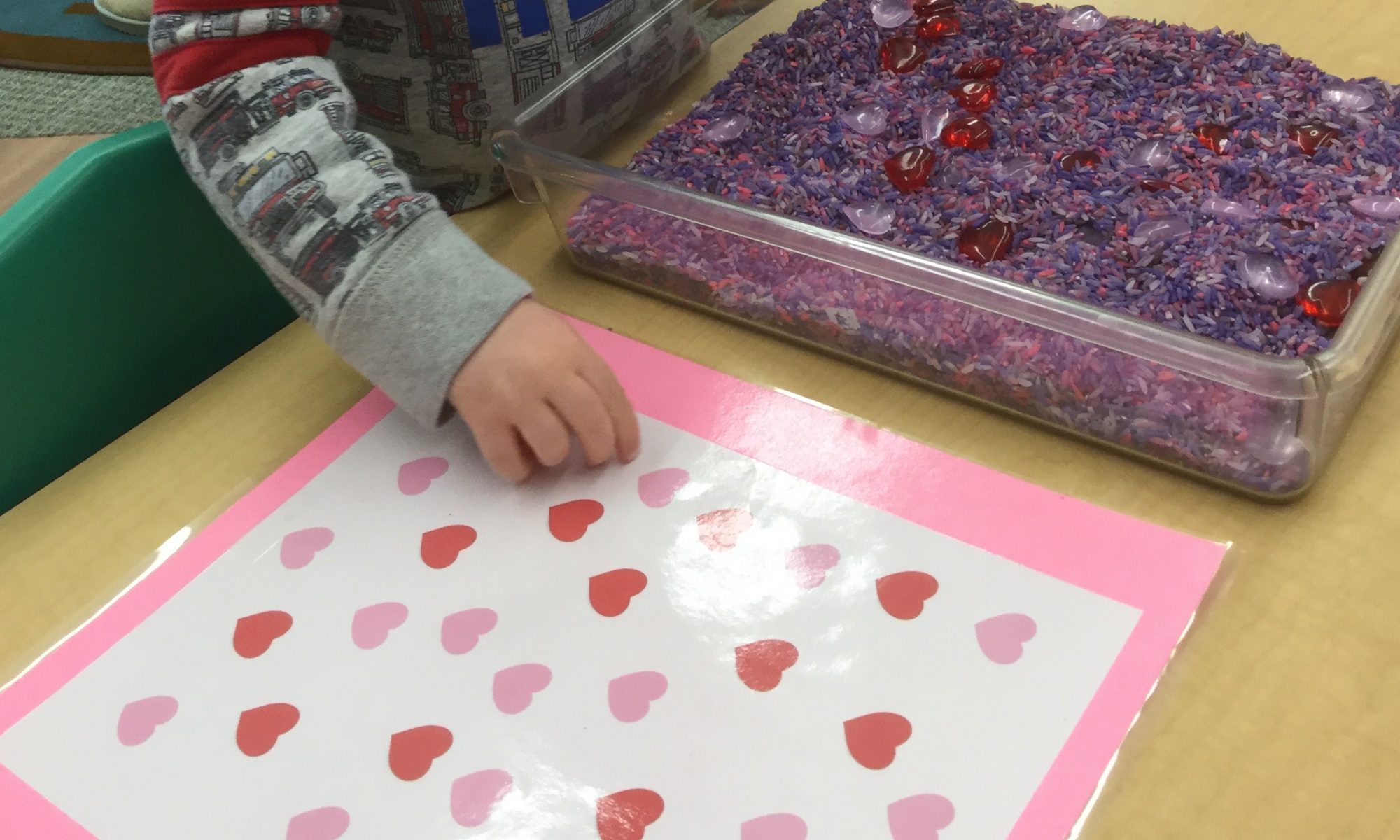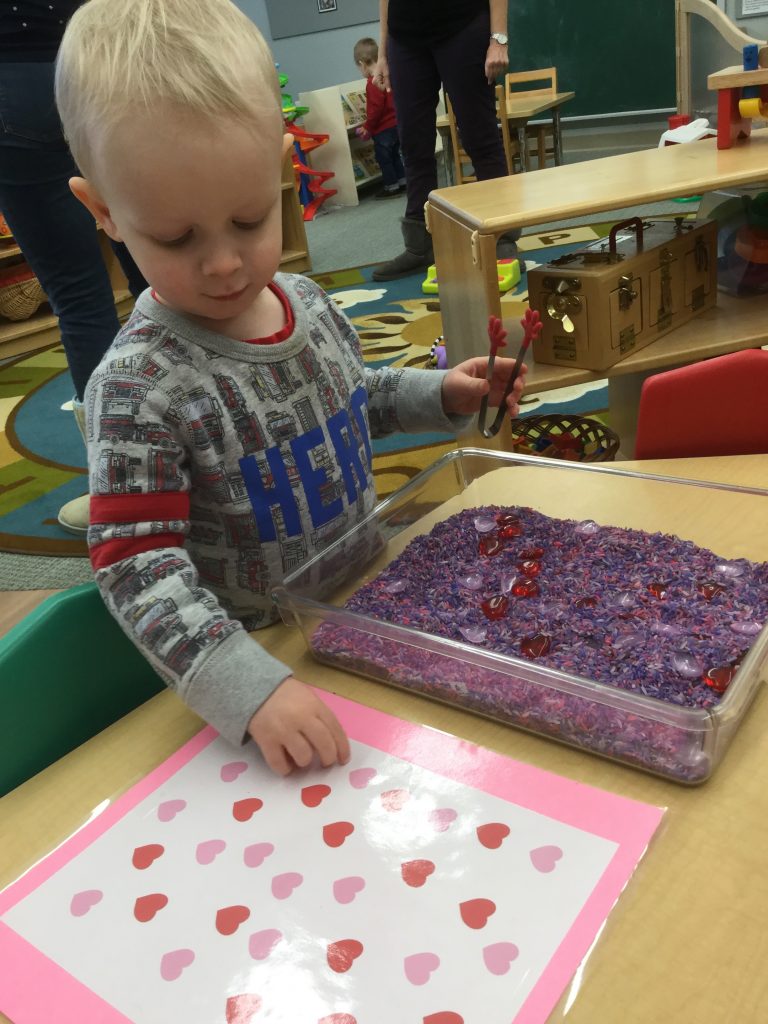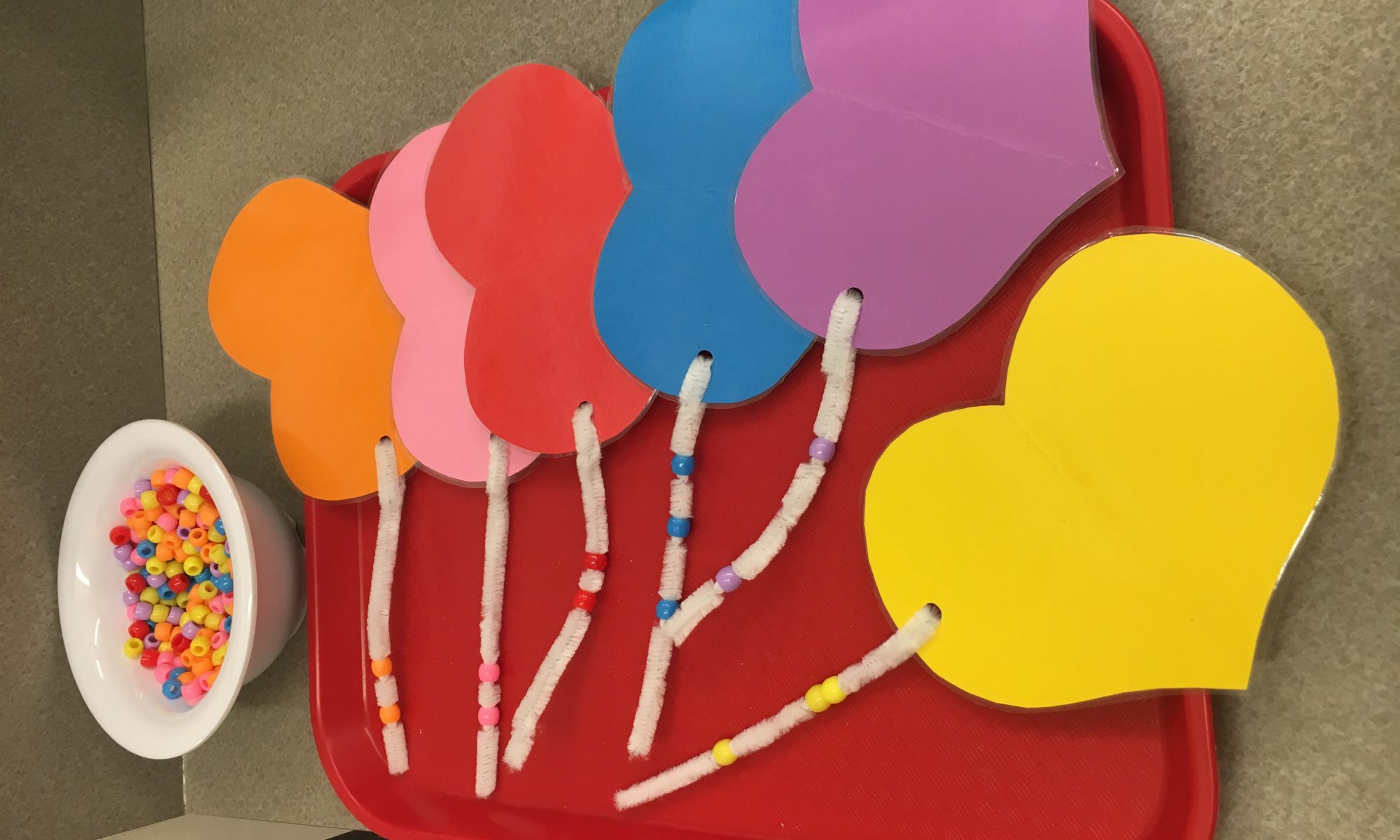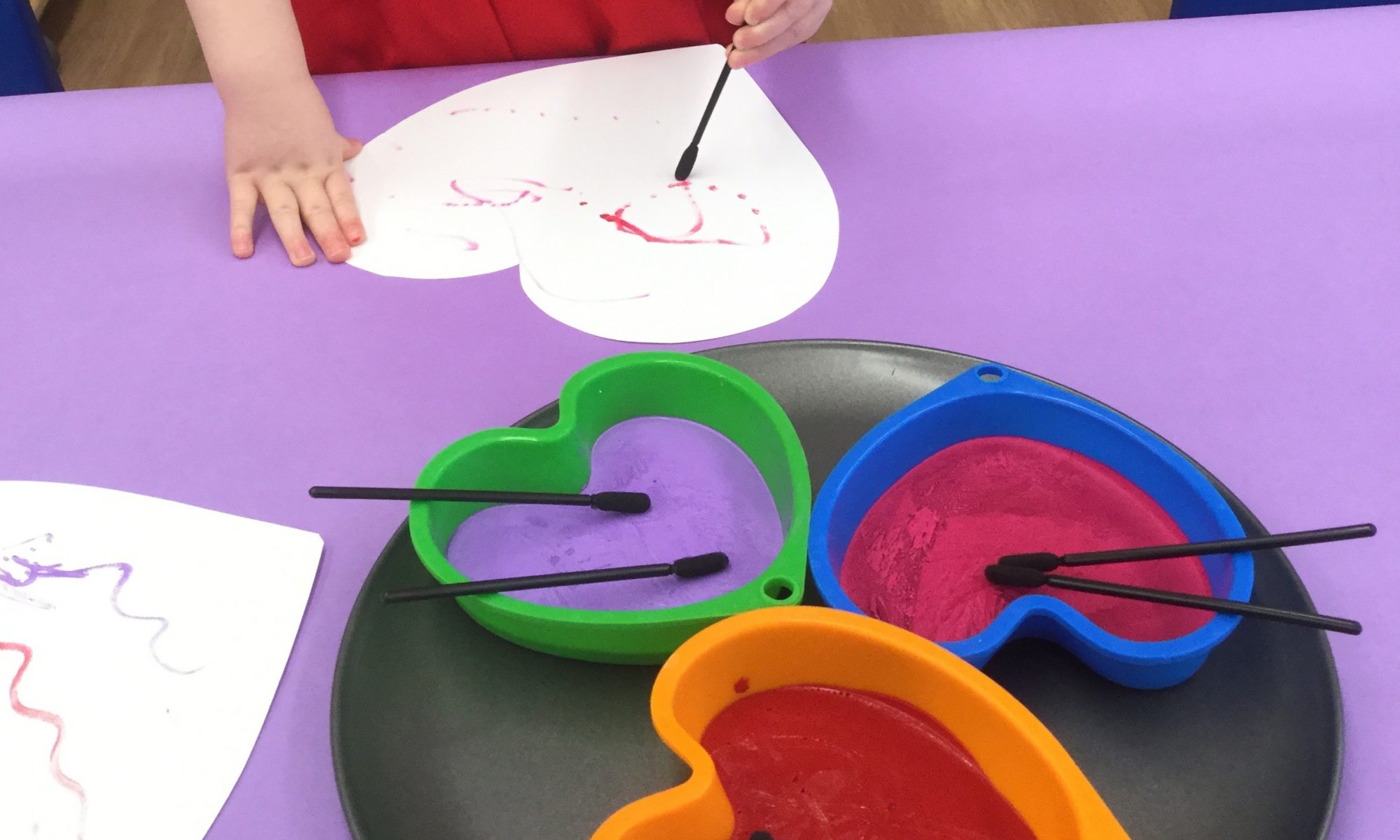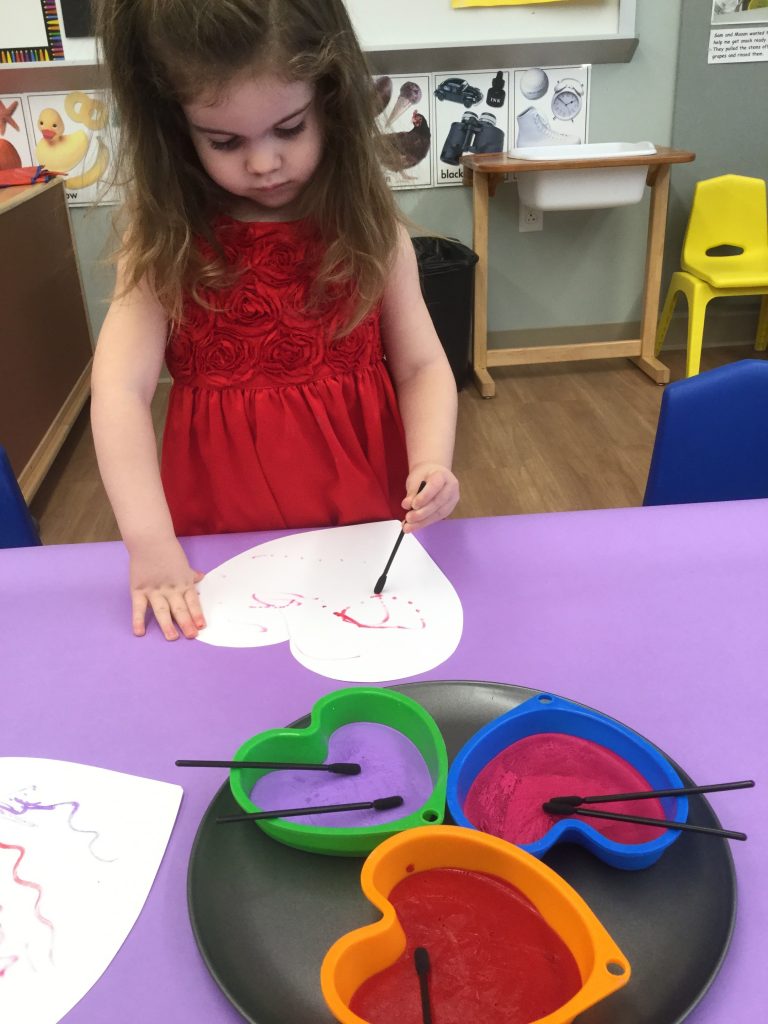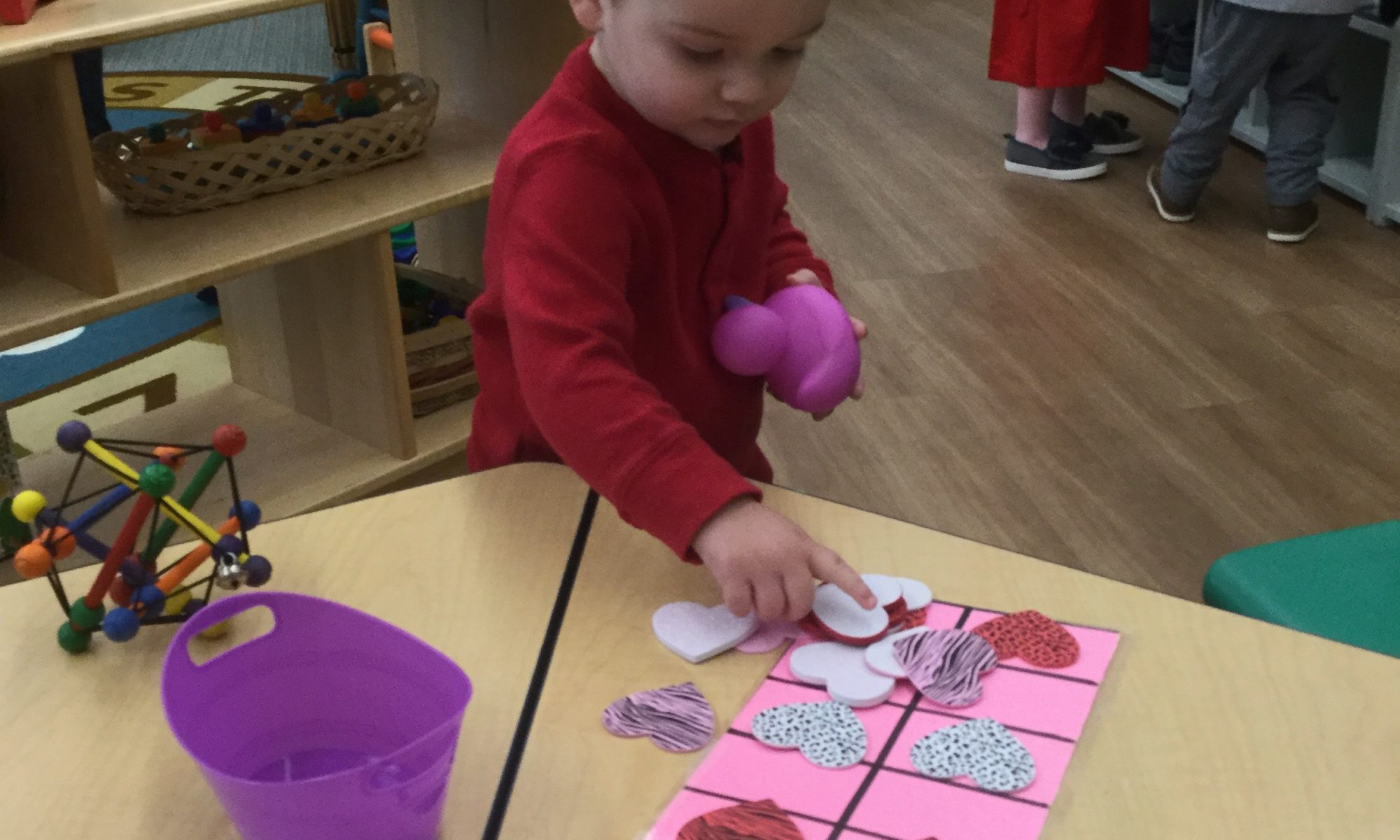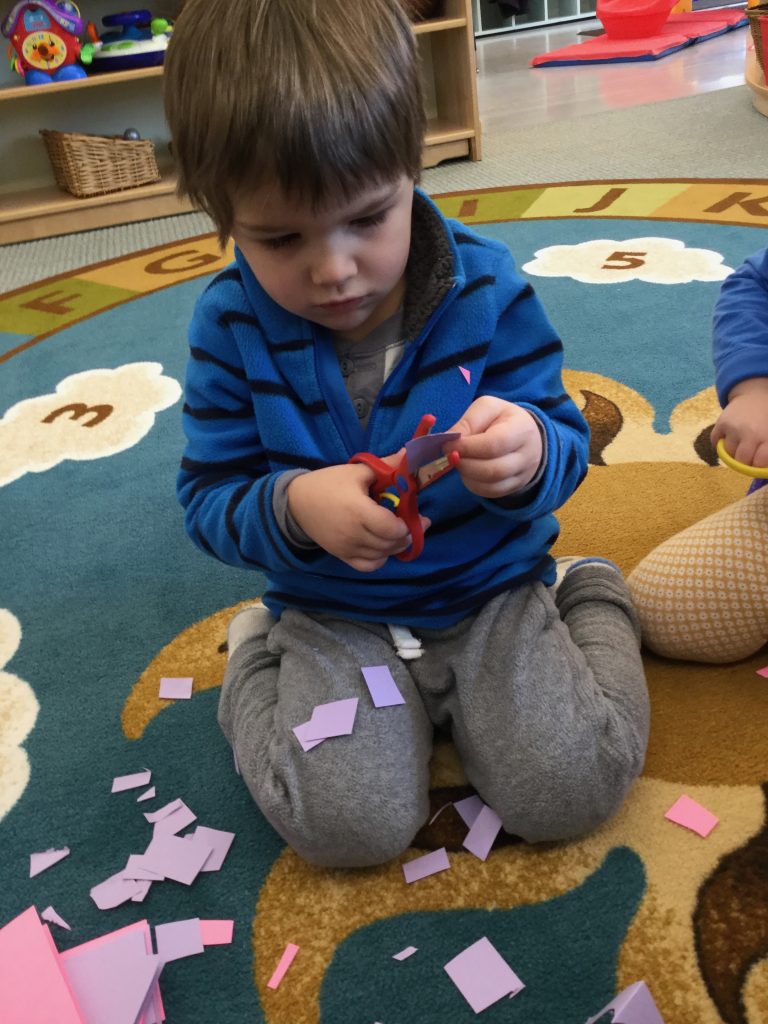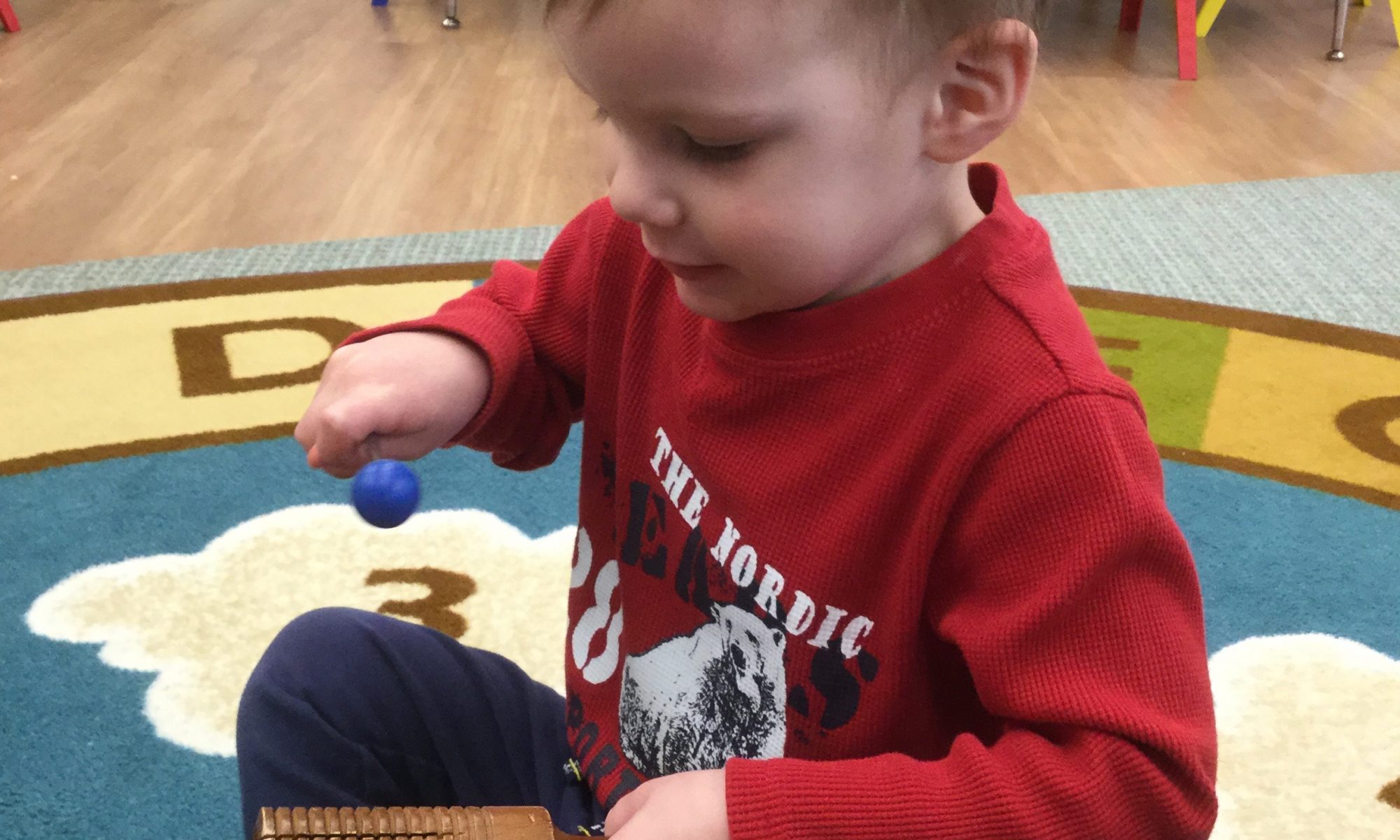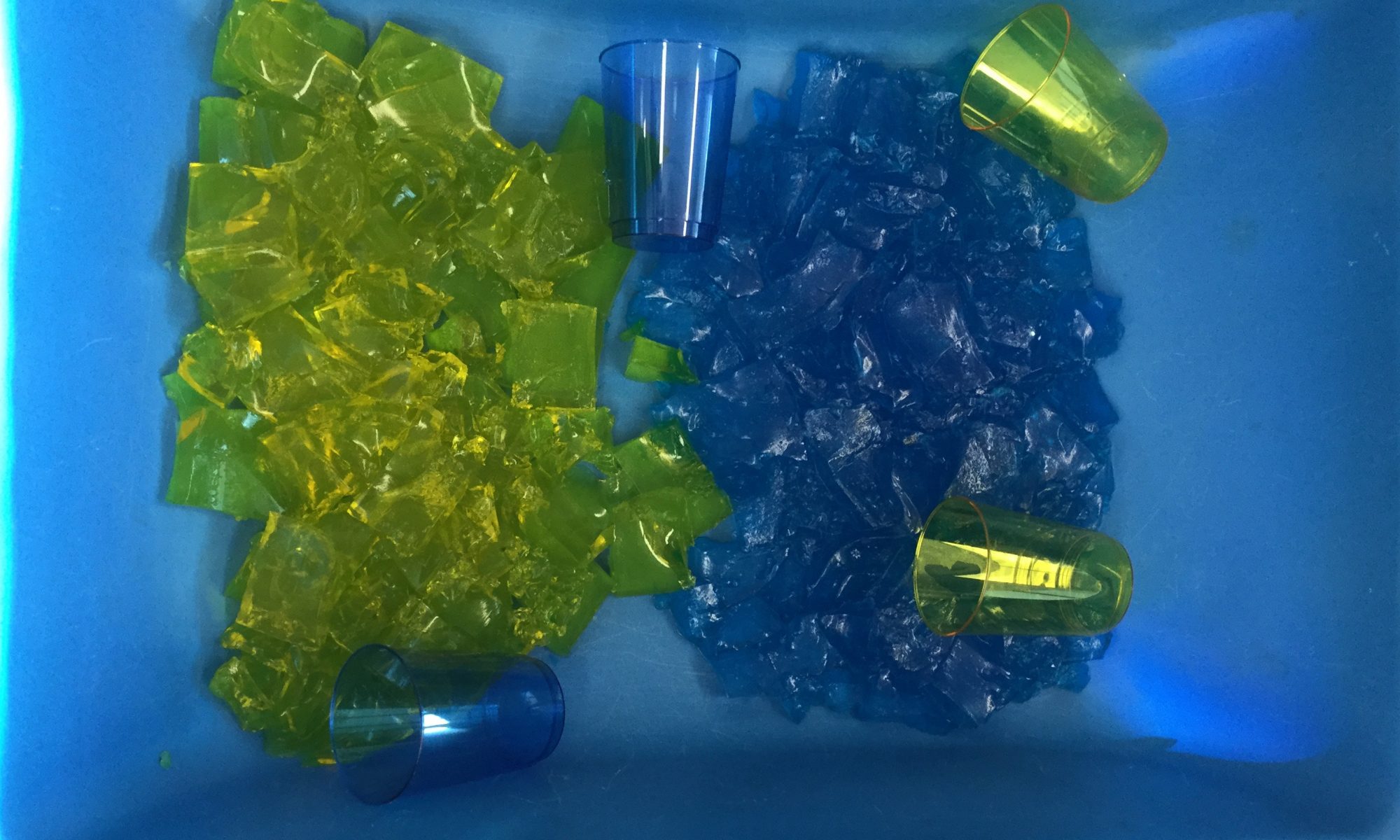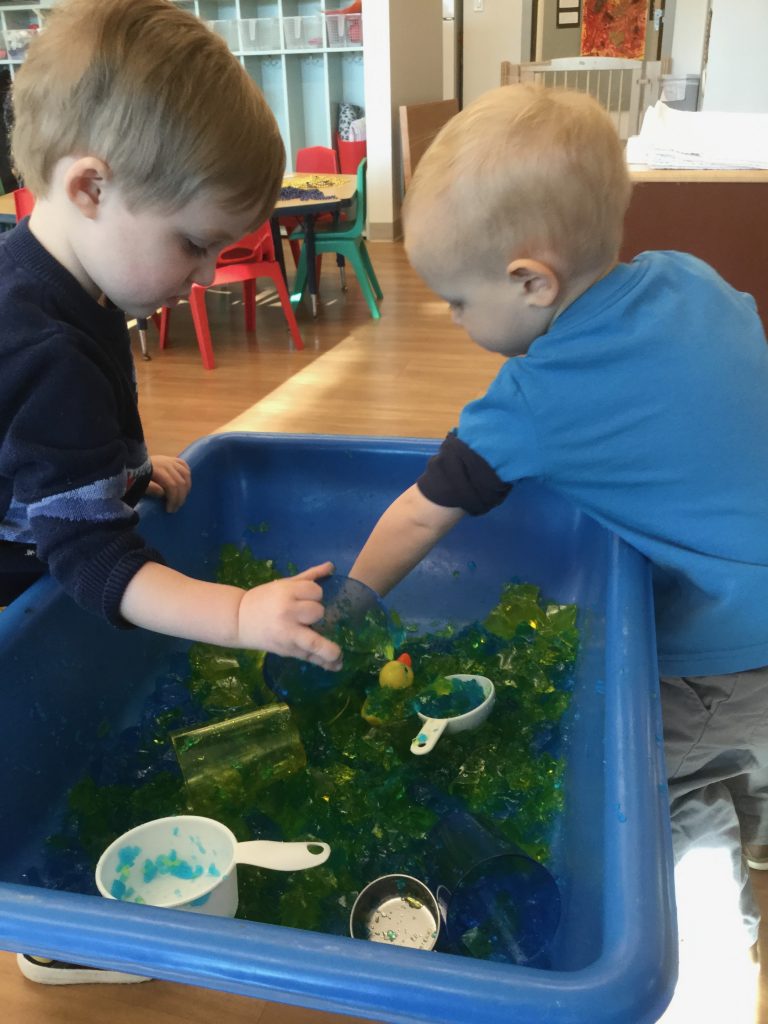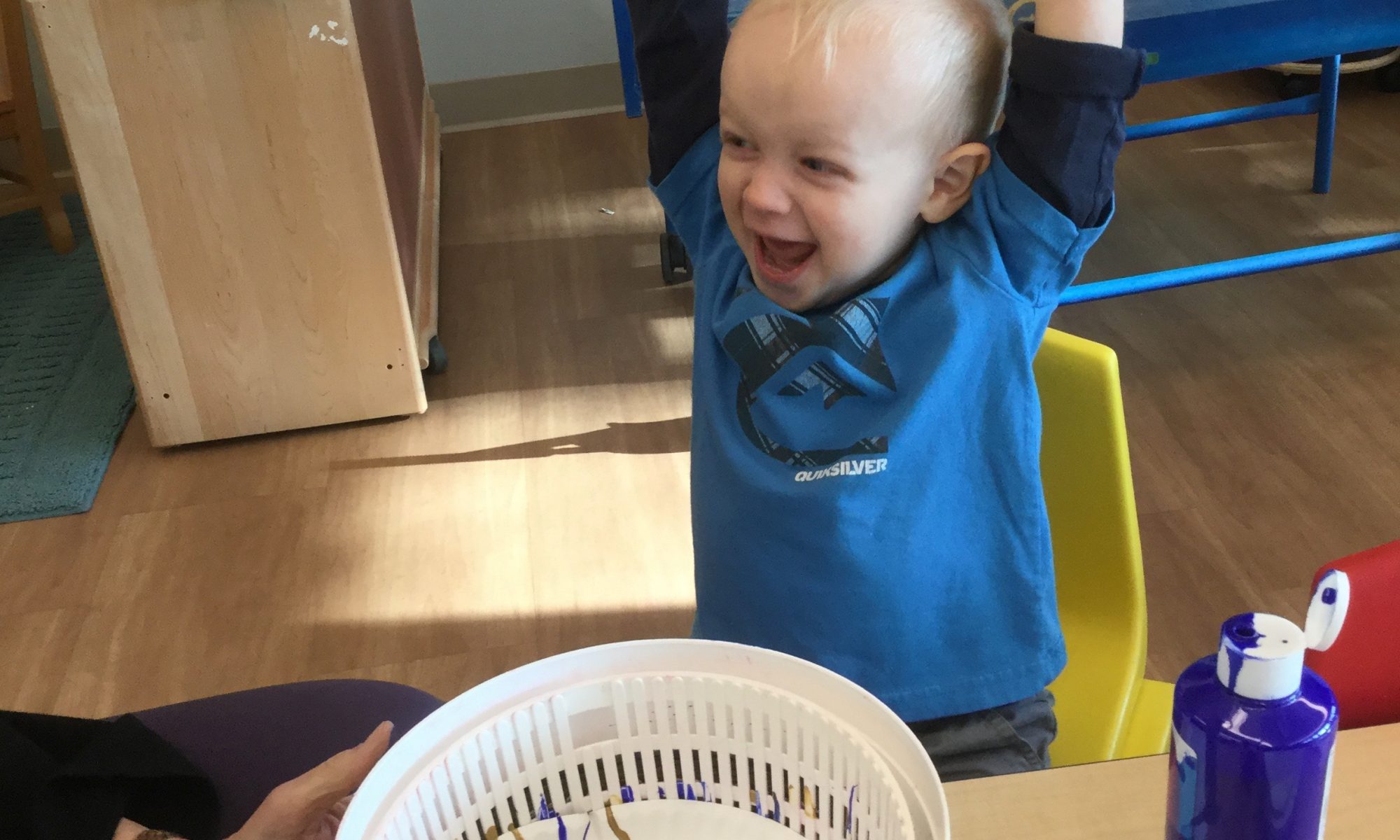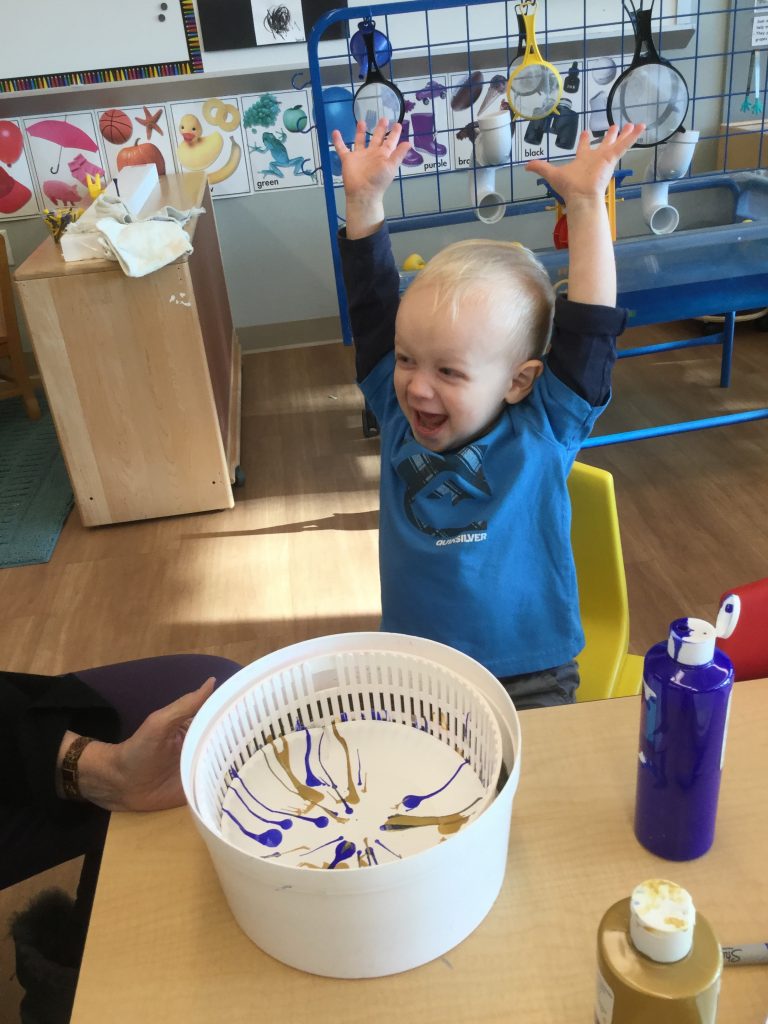Materials:
Foam hearts
Empty coffee can, oatmeal box, or similar container with a lid
Exacto knife or sharp scissors
Directions:
Cut a generously-sized slit in the lid of the can, big enough for the foam hearts to easily slide through. Secure the lid on the can, and give your baby a foam heart. Take one yourself, and tell him you’re going to put it in the mailbox. Show him how you can slide it through the opening. Encourage him to try it. He will probably put the heart in his mouth first, and you can show him how to slide another one in the opening. Ask him if he can put his heart in the box. It’s fine to demonstrate it again. We were successful doing this activity with a 10-month and a 12-month old. But it took them both several tries. It takes a tremendous amount of fine motor skill, eye-hand coordination, and persistence to do it at this age! Celebrate your baby when he’s successful, and encourage him if he’s having a little trouble.
After there are a few hearts in the can, shake the can so your baby can hear the hearts inside. Open the can, and let him shake them out. Try it again if he’s willing!



